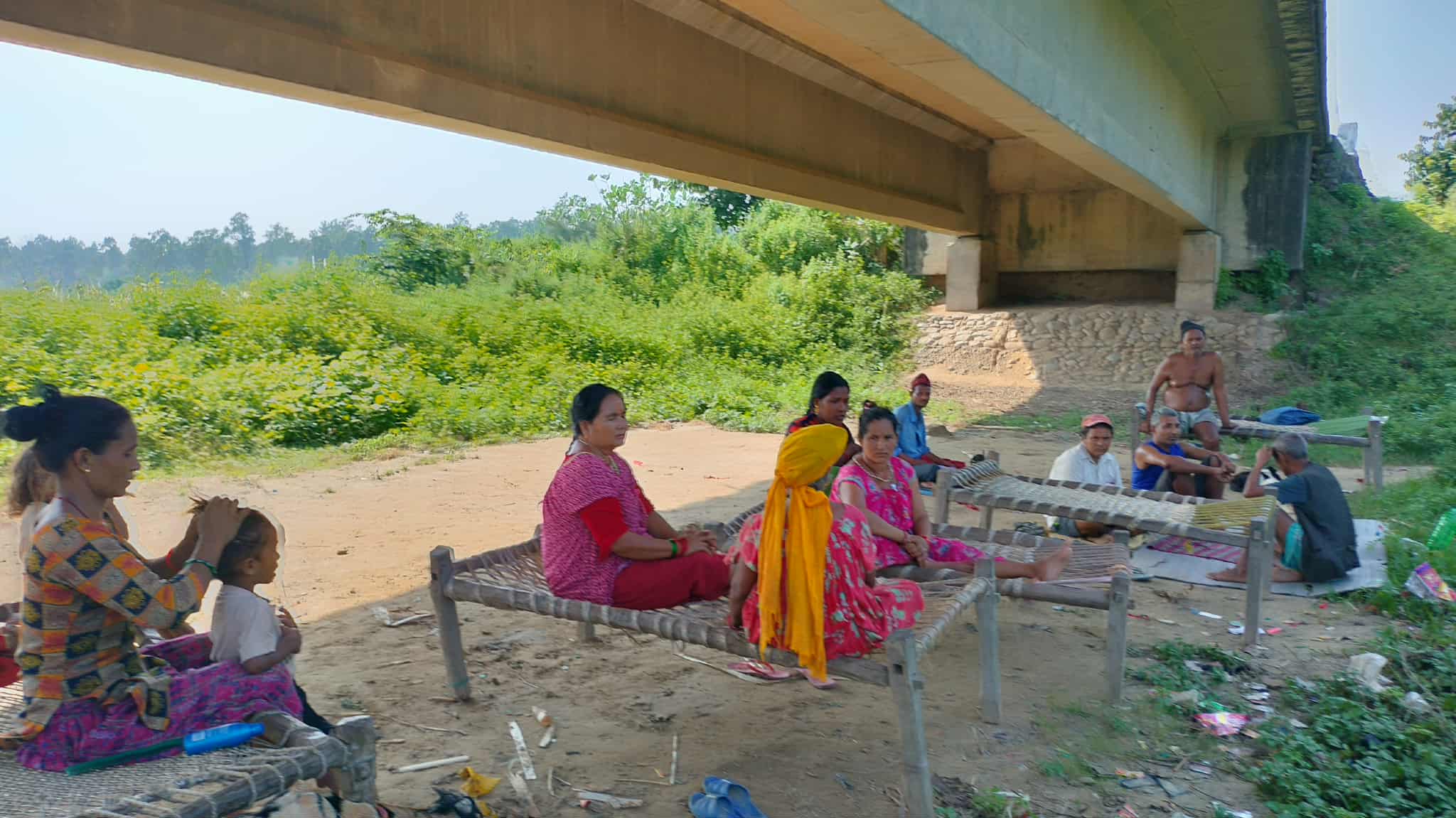

KANCHANPUR: The country is already immersed in the festive spirit of Dashain. With Tika, one of the main highlights of the celebration, just around the corner, households across Nepal are bustling with excitement. Today marks Mahasthami, the eighth day of the festival.
But for the residents of Banahara camp in Shuklaphanta municipality-11, Kanchanpur, which just off the East-West Highway, the festival brings no joy and newness. For this community, where even securing two square meals a day is an uphill battle, the arrival of Dashain only adds salt to the wound.
“We are landless. I’m growing older. Work isn’t always available, and I barely earn enough working one day a week to feed myself,” bemoaned 65-year-old Mathudevi Damai. “I dream of eating delicious food and wearing new clothes during Dashain. But dreams don’t fill stomachs. We will have to live and die like this.”
Banahara camp is home mainly to the elderly, women, and children. Most of the youth from the area have gone to India in search of work. But even during Dashain, they haven’t returned.
“They said they haven’t earned enough to make the trip home this time. They’ve promised to come during Tihar instead. So for us, this Dashain won’t be a celebration,” she said.
Medical care is another challenge. There’s often no one available to take sick children or elderly people to health posts or hospitals when needed.
“We haven’t bought new clothes in over a year. Thinking about festive food is like chasing the wind. For us, managing just two meals a day feels like a big achievement,” Mathudevi added.
Their shelters featuring makeshift huts along the Banahara River, are roofed with tents provided by donors. But these are far from ideal. In the summer, the heat becomes unbearable, forcing them to seek refuge under the nearby bridge.
“Some of us sleep in the open on khatiyas (traditional cots) and sacks to avoid the heat,” said Ranjit Rawat. “There are so many mosquitoes. We hardly sleep at night.”
This community had shifted to the roadside two months ago due to flooding fears. Now, with the waters receded, they’ve returned to their fragile shelters.
“Our struggles go on year after year,” said Dal Bahadur Bohara. “We’ve spent nights under the bridge for years now. But no one seems to care. We have approached the local government many times asking for mosquito nets, tents, and torches, but all we ever get are empty promises.”
Twenty-eight families from the Camp have applied for land and permanent shelter through the Land Problem Settlement Commission. But after two decades of living here, their wait continues with no end in sight.